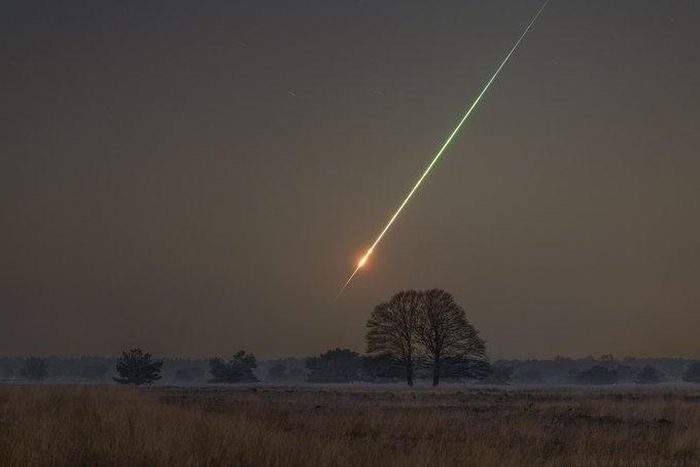Scientists have accurately predicted the impact site on the surface of Earth for a 1-meter diameter meteorite, marking the seventh time this has occurred in history, according to The Guardian.
A meteorite lit up the sky over the English Channel on February 13 after scientists precisely predicted when this object would collide with Earth. This is only the seventh time in history that scientists have made a correct prediction regarding a meteorite’s impact with our planet.

Meteorite Sar2667 creates a shooting star effect as it enters Earth’s atmosphere on February 13. (Photo: Twitter/GijsDeReijke).
The European Space Agency (ESA) announced on February 12 that a 1-meter-sized meteorite would enter Earth’s atmosphere and land near the city of Rouen in France. According to the BBC, this object was later observed flying across the English Channel, creating a stunning shooting star effect.
ESA named the meteorite that collided with Earth on February 13 Sar2667, emphasizing that scientists predicting the destination of this object is “a significant advance in the global monitoring and detection of meteorites.”
Previously, the BBC reported on a statement from the International Meteor Organization indicating that Sar2667 would fall in an area about 4 kilometers off the French coast, creating a “fireball effect.”
While providing information about the impact of meteorite Sar2667 with the Earth’s surface, ESA scientists recalled the last time a meteorite’s trajectory was accurately predicted.
According to them, “the meteorite 2022 WJ1 was first detected by the Catalina Sky Survey project on November 19, 2022. This project is one of the efforts to monitor near-Earth objects.” ESA scientists stated.
They noted that the Catalina telescope captured images of the meteorite. After four observations over approximately 30 minutes, information about the meteorite was relayed to the Minor Planet Center.
“The four observations were sufficient to map the meteorite’s trajectory,” the scientists mentioned. They added that just a few minutes after the data from the Catalina project was released, ESA’s monitoring system predicted that meteorite 2022 WJ1 would fall in North America approximately 3-4 hours later.
“At the predicted time, a meteorite approximately one meter in diameter entered Earth’s atmosphere, creating a large fireball in the predetermined area,” the ESA scientists recounted.


















































